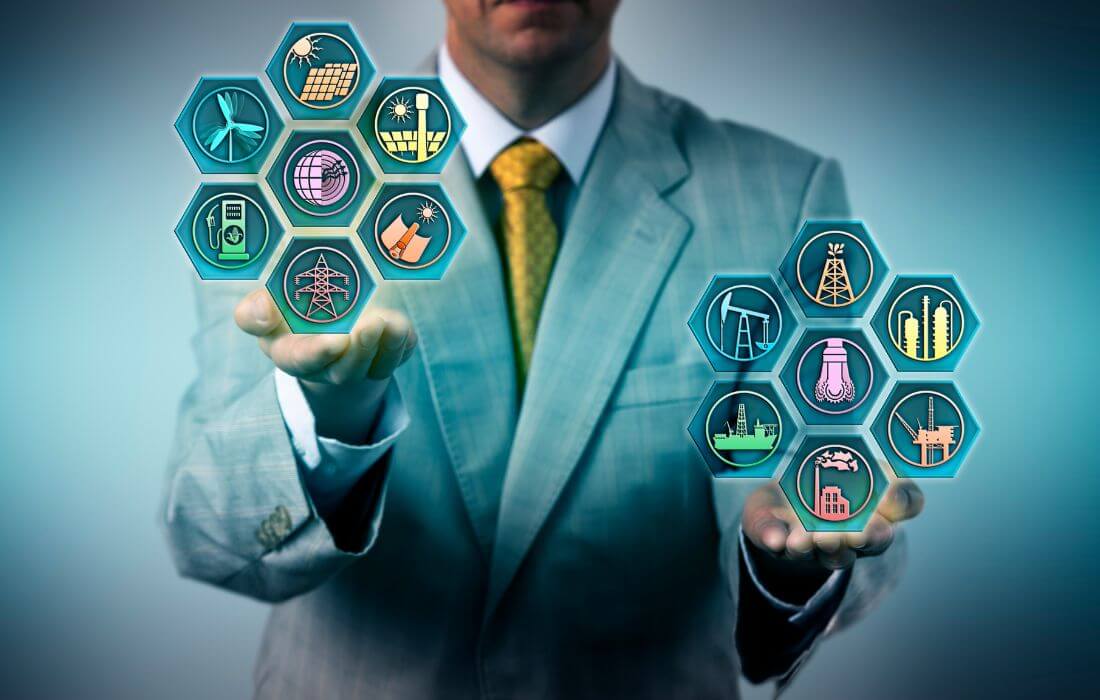Power Sector Investment Strategy of India:
The power or Energy sector on the 1st position in Infrastructure Investment in the last decade, let’s understand the Future Trends of the Power or Energy Sector in India
Investment trend And Sectoral share of India’s infrastructure investment in the Last Decade FY2011-2020. In Trillion Rs.

| Sector | FY13 | FY14 | FY15 | FY16 | FY17 | FY18P | FY19P | Total |
| Power | 2.3 | 2.5 | 2.5 | 2.7 | 3.2 | 2.6 | 1.9 | 17.7 |
| Roads and bridges | 1 | 1.1 | 1.2 | 1.4 | 1.8 | 1.9 | 1.9 | 10.3 |
| Urban | 0.7 | 0.9 | 1.1 | 1.2 | 1.3 | 1.7 | 1.8 | 8.7 |
| Telecom | 0.4 | 0.7 | 1.1 | 1.6 | 1.1 | 1 | 1 | 6.9 |
| Railways | 0.4 | 0.4 | 0.4 | 0.8 | 0.9 | 1.3 | 1.4 | 5.6 |
| Irrigation | 0.5 | 0.5 | 0.5 | 0.7 | 0.8 | 1 | 1.2 | 5.2 |
| Airports | 0 | 0.1 | 0.1 | 0.1 | 0.1 | 0.1 | 0.1 | 0.6 |
| Ports | 0.1 | 0.1 | 0.1 | 0.1 | 0.1 | 0.1 | 0.1 | 0.7 |
| Others | 0.1 | 0.1 | 0 | 0.1 | 0.1 | 0.5 | 0.5 | 1.4 |
| Total infrastructure investment (A) | 5.3 | 6.3 | 7 | 8.5 | 9.2 | 10.2 | 10 | 56.7 |
| Nominal GDP (B) | 99.4 | 112.3 | 124.7 | 137.6 | 153.6 | 171 | 190.1 | 988.1 |
| Infra Investment as % of Nominal GDP (A/B) | 5.50% | 5.60% | 5.60% | 6.20% | 6.00% | 6.00% | 5.30% | 5.70% |
Being a Power Sector on 1st position in Infrastructure investment, India has a definite plan to improve Power Infrastructure for sustainability and reliability in the upcoming decade also. India has a goal to provide affordable and Clean/Green Energy to Indians with the strategy of 24×7 Power Supply to all with reliable Transmission and Distribution Infrastructure with minimum losses of energy in transmission and distribution. Improvement in Power Grid Infrastructure from Traditional Interconnect Grid Networks to Smart Grid Networks for smart transmission and distribution of power by applying smart SCADA system with inbuilt AI (Artificial Intelligence) and ML (Machine Language) automation with Centralized monitoring and operation & maintenance. And also provide Smart Meters / Prepaid Meters to Consumers for smart management of Power Consumption and Revenue Realisation.
The commitment of India in the Power Sector:
India is also committed to the World and taking leadership to combat Global Warming by reducing Carbon Foot Print or say reducing Green House Gas effect by transiting from Conventional/Traditional Energy sources to Non-Conventional / Renewable Energy sources as Conventional Energy sources contribute very high Carbon Gas Emission of total Carbon Emission in the World. Thermal / Fossil fuel power plants are more contributing carbon emissions, so a transition requires from Fossil fuel power plants to Renewable power plants. And so, India is promoting Renewable Power Plants like Solar Power Plants, Wind Energy Power Plants, Small Hydro Power Plants, Bio-Gasified / Bio-Mass Plants, Hydrogen Fuel Plants/Servers and last but not least Nuclear Power Plants (it’s not renewable, but Green Energy plants) through SMRs (Small Module Reactors Technology) technology. India is not just taking initiative for renewable energy generation to reduce its Carbon Footprint also working toward Energy Conservation plans, Energy Conservation means the decision and practice of using less energy by smart and energy-efficient devices.
Climate Change Contribution Commitment of India:
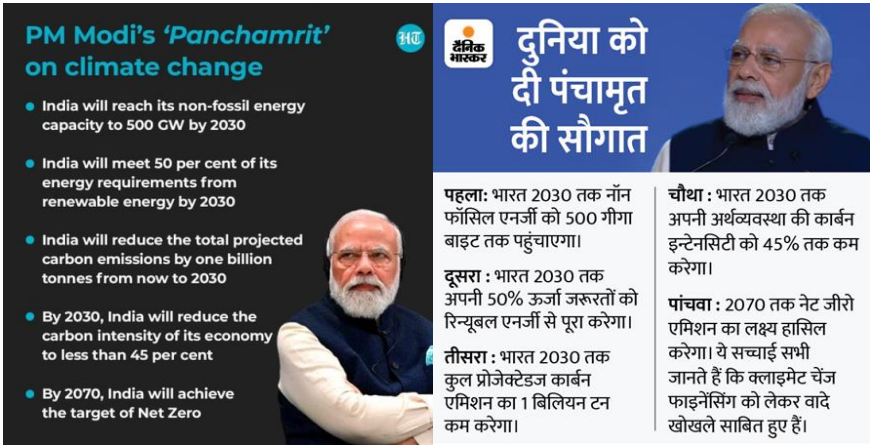
At present Indian Power Plants installed capacity is 404 GW and 58% as fossil power plants and by 2030, the requirements of total power would be expected as 817 GW, almost double. And India has committed to 50% Green Energy production to the world to combat Global Warming / Climate Change and reduce its Carbon footprint by 2030 and also committed to “Carbon Neutral” or “Net Zero” emissions by 2070. In the same direction, India will deploy power plants of 450 GW through Renewable or Green Energy solutions. Out of 450 GW of renewable energy, 280 GW to be deployed as Solar Power Plants by 2030, and up to now only 58 GW has been deployed, So mammoth tasks are ahead. All major Indian Industrials / Businessmen investing in Solar and Hydrogen Fuel. Energy Consumption will be increased per Capita due to lifestyle of Indians, Crypto Currency Mining Servers, Cloud Servers, Electric Vehicles, Smart Home Appliances, Make in India / Aatma Nirbhar Bharat Projects, Start-Up projects etc.
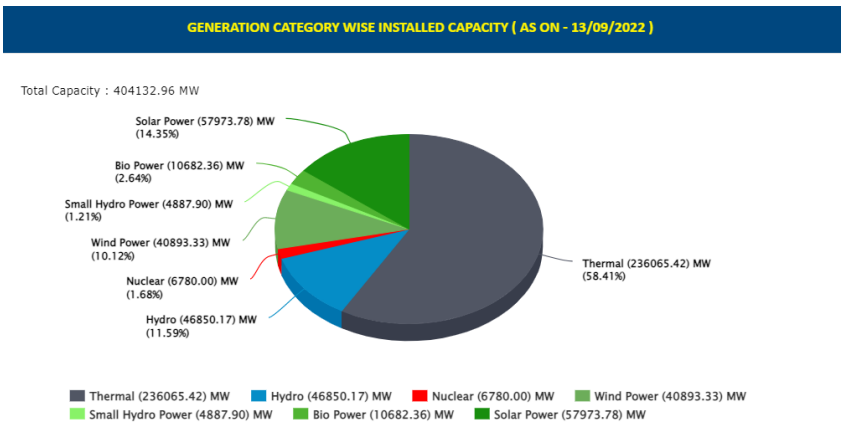
Indian Energy Transition Challenges:
As India is committed to the World and in line with the requirements of Green Energy to combat Global Warming, India is facing and will face challenges to implement Renewable Energy sources, as Renewable energy sources are Intermittent, Less Reliable, Not Enough Space efficient and Costlier. Also, Traditional grid networks may face grid quality parameters issues and handling issues with the injection of Renewable energy in existing Grid Networks. Also, Transport Business Sector is transiting towards Green Vehicle products by using Li-Ion, LiFePo4 & other Batteries, Super Capacitors Battery Bank, and Hydrogen Fuel Cell Vehicles which require more and more Electrical Energy to charge Battery Vehicles and require infrastructure for same. EV Vehicles and Green Hydrogen Policy will make India to combat against all odds to move towards Nation “Net Zero” Emission commitment. The growth in the Power Sector through Renewable Energy Sources and the Improvement of Grid networks need Skill Man Power. So, opportunities for new jobs and business in India in Renewable Energy Sector or Power sector open doors with winding both hands.
Indian Energy Consumption Trend:
India has 16.3 units (KWh) consumption per capita in 1947, 1010 Units consumption per capita in 2015 and in 2020, 1208 Units consumption per capita. And it is going to increase YoY (Year on Year) basis, expected almost 2 times or 3 times higher, around 2500 to 3000 Units per Capita, by 2030. So, with the increase in per Capita consumption, India is giving highest priority to growth of power sector. Per Capita Electricity Energy consumption in India is comparatively less against developed and developing countries across World. As India is developing country, Power Sector growth is most important for Industrial Development. So, in future, India will need more and more electrical energy.
Per Capita Consumption:
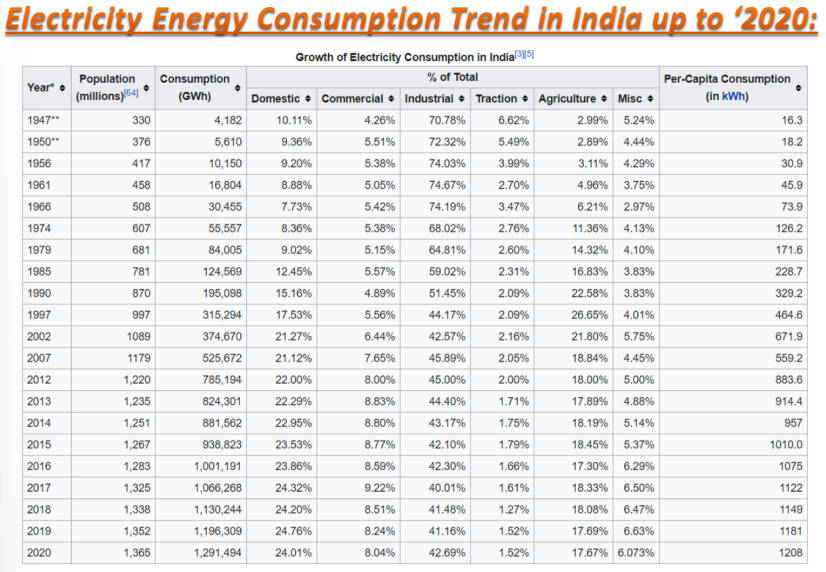
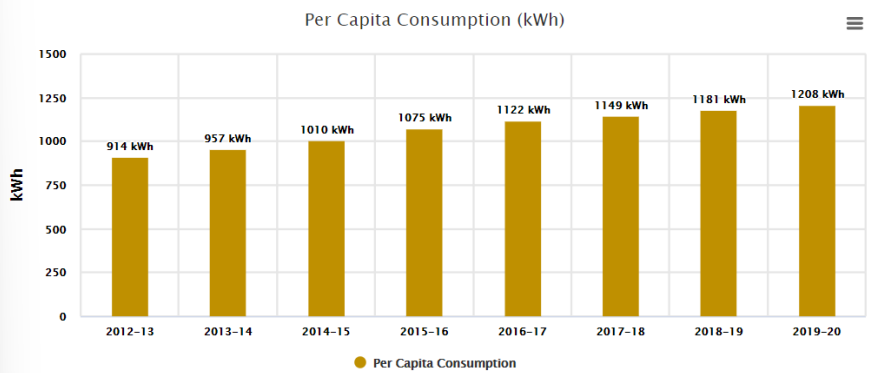
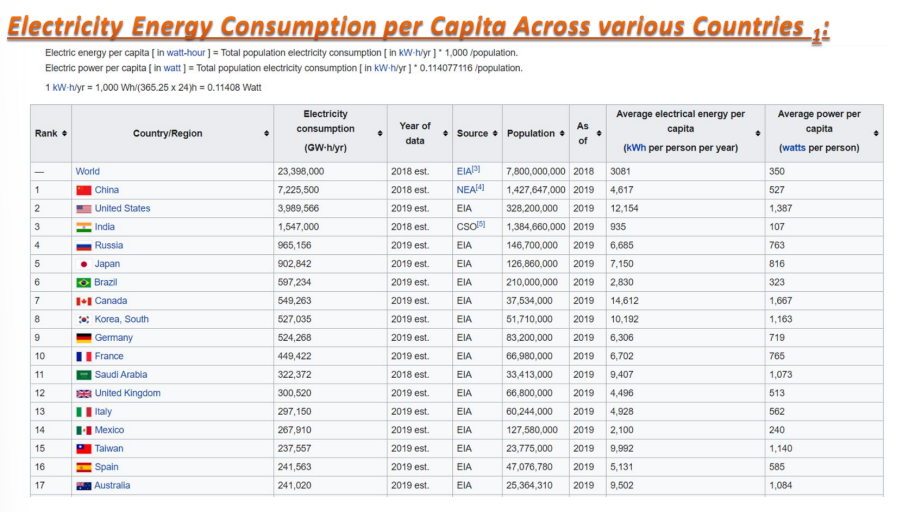
Indian Energy Generation Trend:
India’s energy generation growth or journey from 1947 to 2021 as depicted below. It was started with 1362 MW generation capacity to 382 GW capacity up to March’2021. Till now, Thermal Power Plant are major contributors in Energy Plant Capacity Growth, but now a paradigm shift towards Renewable Energy Plants.
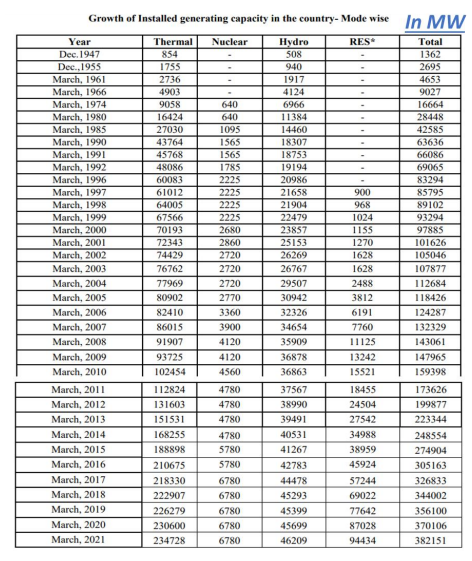
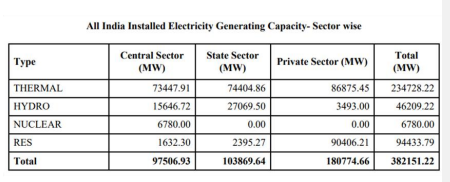
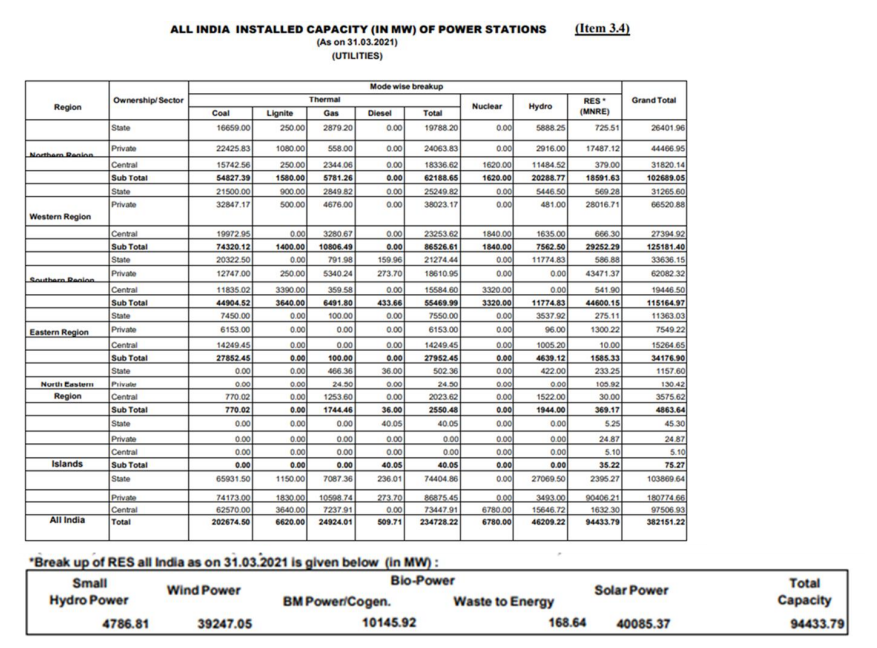
Blog by: Hemant Gandhi


